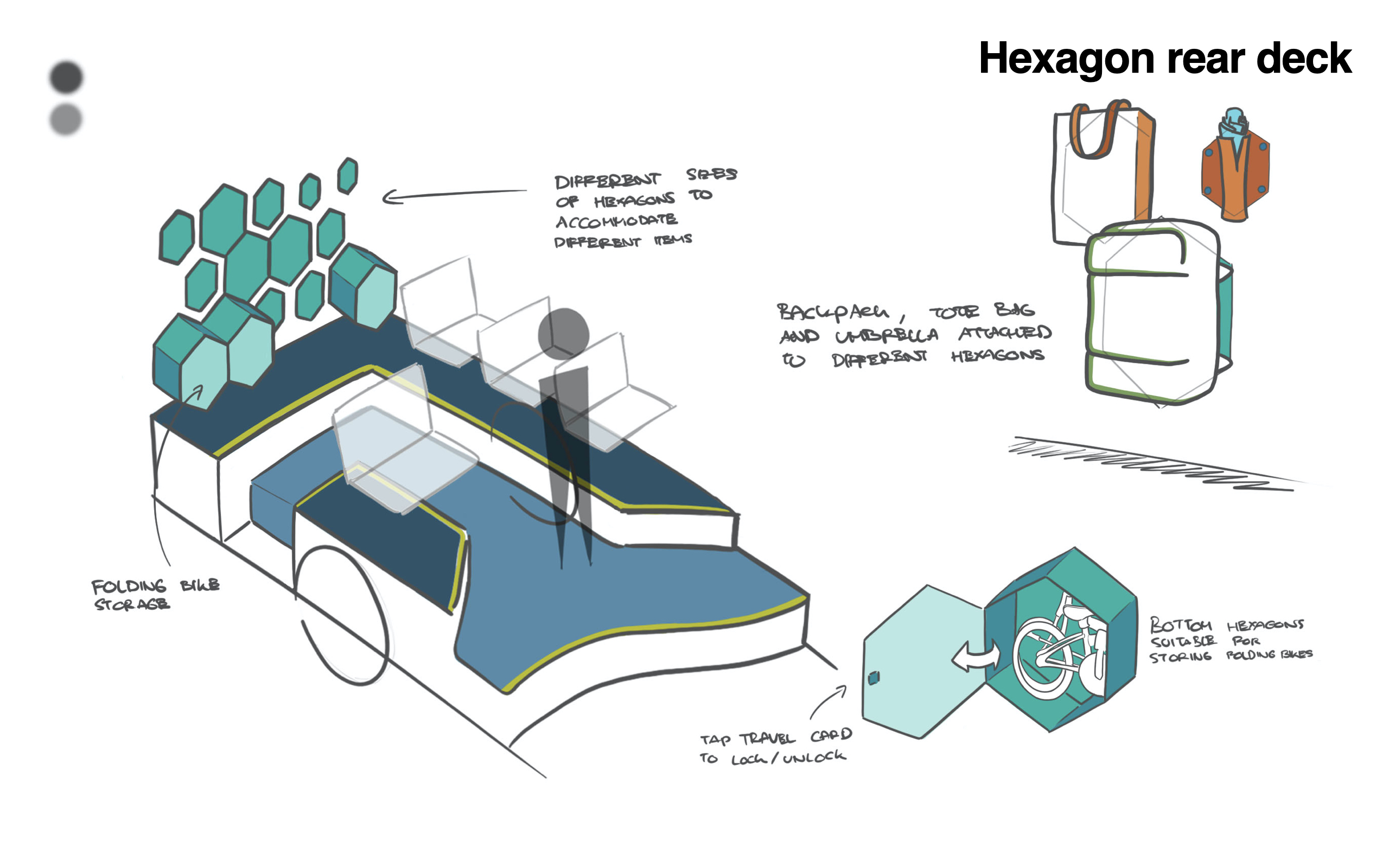Ideas Lab
Ponte posteriore Hexagon. Progettato per il progetto TInnGO da Ronald Jurianto
RONALD JURIANTO
Come parte di una più ampia serie di idee che affrontano i problemi di gestione dell'appartenenza sugli autobus, questo progetto proposto utilizza lo spazio precedentemente occupato dalla panchina posteriore per consentire un ulteriore stoccaggio. Popolato con esagoni tassellati, il ponte posteriore è fatto per completare l'ombrello idrofobo proposto, la tote bag e lo zaino, permettendo loro di essere attaccati sugli esagoni di varie dimensioni. Il ponte posteriore ha anche spazi adatti a biciclette pieghevoli verso il fondo. Avendo una visuale basata sugli esagoni, questa soluzione richiama la metafora della struttura a nido d'ape, creando una soluzione di stoccaggio leggera ma forte, mentre serve un messaggio di consapevolezza ambientale.
Comments
As we have already discussed, I love this idea.
The only thing that has occurred to me is an addition that might make it even easier to use:
For example, if you have a whole wall full of hexagons, it might be difficult for some passengers to store their belongings in the upper or lower rows (older people, smaller). Therefore it would be great if this wall could be "movable". Maybe similar to a "wheel of fortune", so that you can pull the hexagon containing your belongings to the right height for your needs in order to be able to store and unstore.


4 years ago